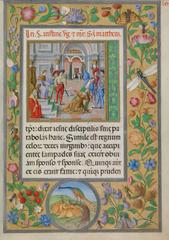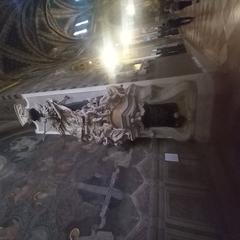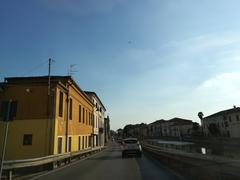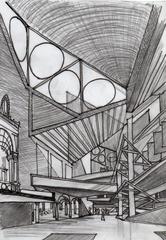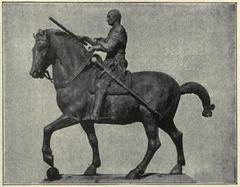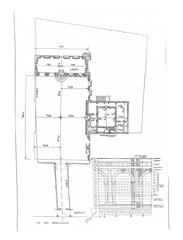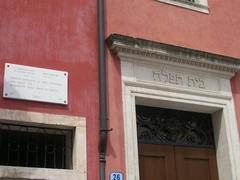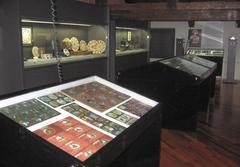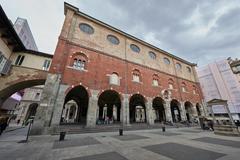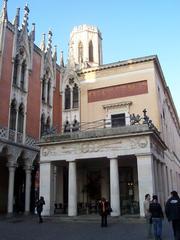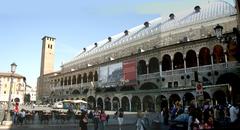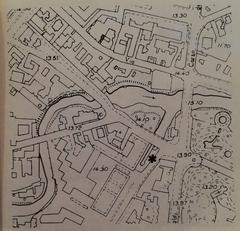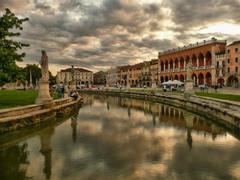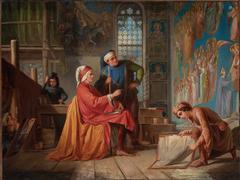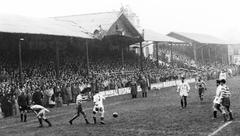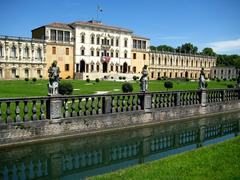Visiting Museo di Storia della Medicina in Padova: Hours, Tickets, and Tips
Date: 23/07/2024
Introduction
The Museo di Storia della Medicina in Padova (MUSME) is an essential destination for anyone fascinated by the history and evolution of medical science. Located in the heart of Padua, Italy, MUSME stands as a testament to the city’s rich medical heritage, dating back to the establishment of the University of Padua in 1222. The museum is housed in the historic building of the ancient Hospital of San Francesco, which itself is a significant artifact from the 15th century. This site was one of the earliest medical institutions in Europe, reflecting Padua’s pioneering role in medical education and practice. The University of Padua has been home to some of the most influential figures in medical history, such as Andreas Vesalius, the father of modern anatomy, and William Harvey, who discovered the circulation of blood. (MUSME Official Website)
MUSME seamlessly combines history with modern technology, offering an engaging and interactive experience for visitors. From detailed anatomical models to virtual reality experiences, the museum’s exhibits provide a comprehensive overview of medical advancements over the centuries. It also serves as a center for ongoing research and preservation, collaborating with academic institutions like the University of Padua to further the understanding and appreciation of medical history. Whether you are a student, a medical professional, or simply a history enthusiast, MUSME offers a unique and enriching journey through the history of medicine.
Table of Contents
- [Origins and Establishment](#origins-and-establishmentorigins-and-establishment)
- [Architectural Significance](#architectural-significancearchitectural-significance)
- [Contributions to Medical Science](#contributions-to-medical-sciencecontributions-to-medical-science)
- [Evolution of Medical Education](#evolution-of-medical-educationevolution-of-medical-education)
- [Visiting Hours](#visiting-hoursvisiting-hours)
- [Ticket Information](#ticket-informationticket-information)
- [Interactive Exhibits and Modern Technology](#interactive-exhibits-and-modern-technologyinteractive-exhibits-and-modern-technology)
- [Preservation and Research](#preservation-and-researchpreservation-and-research)
- [Educational Programs and Outreach](#educational-programs-and-outreacheducational-programs-and-outreach)
- [Nearby Attractions](#nearby-attractionsnearby-attractions)
- [Frequently Asked Questions (FAQ)](#frequently-asked-questions-faqfrequently-asked-questions-faq)
- [Visitor Tips](#visitor-tipsvisitor-tips)
- [Conclusion and Call to Action](#conclusion-and-call-to-actionconclusion-and-call-to-action)
Origins and Establishment
The Museo di Storia della Medicina in Padova (MUSME) is a testament to the rich medical history of Padua, Italy. The museum is housed in the historic building of the ancient Hospital of San Francesco, which dates back to the 15th century. The hospital was one of the earliest medical institutions in Europe, reflecting Padua’s long-standing tradition in medical education and practice. The University of Padua, founded in 1222, is one of the oldest universities in the world and has been a significant center for medical studies. The establishment of MUSME in 2015 was a natural extension of this legacy, aiming to preserve and showcase the advancements in medical science that have taken place in Padua over the centuries.
Architectural Significance
The building that houses MUSME is itself a historical artifact. The Hospital of San Francesco was constructed in 1414 and served as a hospital until the 18th century. The architecture of the building is a blend of Gothic and Renaissance styles, reflecting the architectural trends of the period. The restoration of the building for the museum was carried out with great care to preserve its historical integrity while adapting it for modern use. The museum’s design integrates contemporary elements with the historical structure, creating a unique space that honors the past while embracing the future.
Contributions to Medical Science
Padua has been a hub for medical innovation for centuries, and MUSME highlights the city’s contributions to the field. One of the most notable figures associated with Padua is Andreas Vesalius, a 16th-century anatomist who is often referred to as the father of modern anatomy. Vesalius’ work, “De humani corporis fabrica,” was groundbreaking in its detailed and accurate depiction of the human body. His association with the University of Padua underscores the city’s importance in the history of medical science.
Another significant figure is William Harvey, who studied at the University of Padua and later discovered the circulation of blood. Harvey’s work laid the foundation for modern physiology and cardiology. The museum features exhibits dedicated to these pioneers, showcasing their contributions and the impact of their discoveries on medical science.
Evolution of Medical Education
MUSME also traces the evolution of medical education in Padua. The University of Padua was one of the first institutions to establish a formal medical curriculum, and it has been at the forefront of medical education for centuries. The museum’s exhibits include historical medical instruments, anatomical models, and early medical texts, providing a comprehensive overview of the development of medical education.
One of the highlights of the museum is the reconstruction of the anatomical theatre of the University of Padua, where students would observe dissections and learn about human anatomy. This theatre is a replica of the original, which was built in 1594 and is considered one of the oldest surviving anatomical theatres in the world. The reconstruction provides visitors with a glimpse into the educational practices of the past and the advancements that have been made over the centuries.
Visiting Hours
MUSME is open to visitors from Tuesday to Sunday, with visiting hours typically from 10:00 AM to 6:00 PM. It is advisable to check the official website for any changes in hours or special holiday schedules before planning your visit.
Ticket Information
Tickets for MUSME can be purchased online through the official website or at the museum entrance. Prices may vary depending on age, group size, and any ongoing exhibitions or events. Discounts are often available for students, seniors, and children.
Interactive Exhibits and Modern Technology
MUSME is not just a repository of historical artifacts; it is also a modern, interactive museum that uses technology to engage visitors. The museum features interactive exhibits that allow visitors to explore the human body, learn about medical procedures, and understand the history of medical science in an engaging and immersive way. For example, visitors can use touchscreens to explore detailed 3D models of the human body, learning about different organs and systems.
The museum also uses augmented reality (AR) and virtual reality (VR) to enhance the visitor experience. These technologies allow visitors to interact with historical medical instruments and procedures in a way that would not be possible with traditional exhibits. This blend of history and technology makes MUSME a unique and engaging destination for visitors of all ages.
Preservation and Research
In addition to its role as a museum, MUSME is also a center for research and preservation. The museum collaborates with the University of Padua and other institutions to conduct research on the history of medicine and to preserve historical medical artifacts. The museum’s collection includes rare medical texts, historical instruments, and anatomical models, many of which are used in ongoing research projects.
The museum also hosts conferences, workshops, and lectures on various topics related to the history of medicine. These events bring together scholars, researchers, and medical professionals to discuss the latest developments in the field and to share their knowledge with the public. Through these activities, MUSME continues to contribute to the advancement of medical science and education.
Educational Programs and Outreach
MUSME is committed to education and outreach, offering a variety of programs for students, teachers, and the general public. The museum’s educational programs are designed to inspire and educate the next generation of medical professionals and to promote an understanding of the history of medicine among the general public. These programs include guided tours, hands-on workshops, and interactive exhibits that cater to different age groups and educational levels.
The museum also collaborates with schools and universities to develop educational materials and resources that can be used in the classroom. These materials are designed to complement the museum’s exhibits and to provide students with a deeper understanding of the history of medicine. Through these efforts, MUSME aims to foster a greater appreciation for the contributions of medical science to society and to inspire future generations to pursue careers in the field.
Nearby Attractions
Visitors to MUSME can also explore other historical sites in Padua. Notable attractions include the Scrovegni Chapel, renowned for its frescoes by Giotto, and the Prato della Valle, one of the largest squares in Europe. The Botanical Garden of Padua, a UNESCO World Heritage site, offers a serene escape and a glimpse into botanical history.
Frequently Asked Questions (FAQ)
Q: What are the opening hours of MUSME?
A: MUSME is open from Tuesday to Sunday, 10:00 AM to 6:00 PM. Check the official website for any updates.
Q: How can I purchase tickets for MUSME?
A: Tickets can be purchased online through the official website or at the museum entrance.
Q: Are there any discounts available for tickets?
A: Yes, discounts are available for students, seniors, and children. Group rates may also apply.
Q: What are some nearby attractions to visit?
A: Nearby attractions include the Scrovegni Chapel, Prato della Valle, and the Botanical Garden of Padua.
Visitor Tips
Getting There
MUSME is located in the heart of Padua, making it easily accessible by various modes of transportation. The museum is a short walk from the Padua train station, which is well-connected to major Italian cities like Venice and Milan. For those traveling by car, parking can be found in nearby public lots, though availability may vary. Public buses and trams also serve the area, with stops conveniently close to the museum.
Guided Tours and Educational Programs
For a more enriching experience, consider joining one of the guided tours offered by the museum. These tours provide in-depth insights into the exhibits and the history of medical science. The museum also offers educational programs and workshops tailored for different age groups, making it an excellent destination for school trips and family visits. Information on these programs can be found on the museum’s educational page.
Accessibility
The museum is committed to being accessible to all visitors. It is equipped with ramps and elevators to accommodate those with mobility issues. Additionally, there are tactile exhibits and audio guides available for visually impaired visitors. For those with hearing impairments, the museum provides written guides and sign language tours upon request. Detailed accessibility information can be found on the museum’s accessibility page.
Dining and Refreshments
After exploring the museum, visitors can enjoy a meal or refreshments at one of the many cafes and restaurants in the vicinity. The area around MUSME offers a variety of dining options, from traditional Italian trattorias to modern eateries. For a quick snack or coffee, there are several cafes within walking distance. For those looking to experience local cuisine, Padua’s vibrant food scene includes specialties like “bigoli” pasta and “fugassa” bread.
Souvenirs and Gift Shop
The museum’s gift shop offers a range of souvenirs, including books, educational toys, and unique medical-themed items. Purchasing a souvenir not only provides a memento of your visit but also supports the museum’s educational and preservation efforts. The shop is located near the entrance, making it convenient to browse before or after your tour.
Photography and Social Media
Photography is generally allowed in most areas of the museum, but it is always best to check for any restrictions, especially in special exhibit areas. Sharing your experience on social media can be a great way to remember your visit and inspire others to explore MUSME. The museum often features visitor photos on its official Instagram page, so be sure to tag them in your posts.
Safety and Etiquette
To ensure a pleasant experience for all visitors, it is important to follow the museum’s guidelines and etiquette. This includes not touching the exhibits unless explicitly allowed, keeping noise levels down, and supervising children at all times. The museum staff are there to help, so do not hesitate to ask for assistance or information.
Special Events and Temporary Exhibits
MUSME frequently hosts special events, temporary exhibits, and lectures that delve deeper into specific aspects of medical history. These events are often included with general admission, but some may require separate tickets. Keeping an eye on the museum’s events calendar can help you plan your visit to coincide with these unique opportunities.
Conclusion and Call to Action
MUSME is a unique institution that combines history, education, and technology to provide a comprehensive overview of the history of medicine. Its exhibits and programs highlight the contributions of Padua to the field of medical science and provide visitors with an engaging and immersive experience. Whether you are a student, a medical professional, or simply someone with an interest in the history of medicine, MUSME offers something for everyone. Don’t forget to check the visiting hours and ticket information before planning your visit, and explore the nearby attractions to make the most of your trip to Padua.
Plan your visit today! Purchase tickets online, follow us on social media for updates, and explore our other articles for more information on the rich history of Padua. (MUSME Official Website)
References
- Museo di Storia della Medicina in Padova (MUSME) Official Website MUSME Official Website
